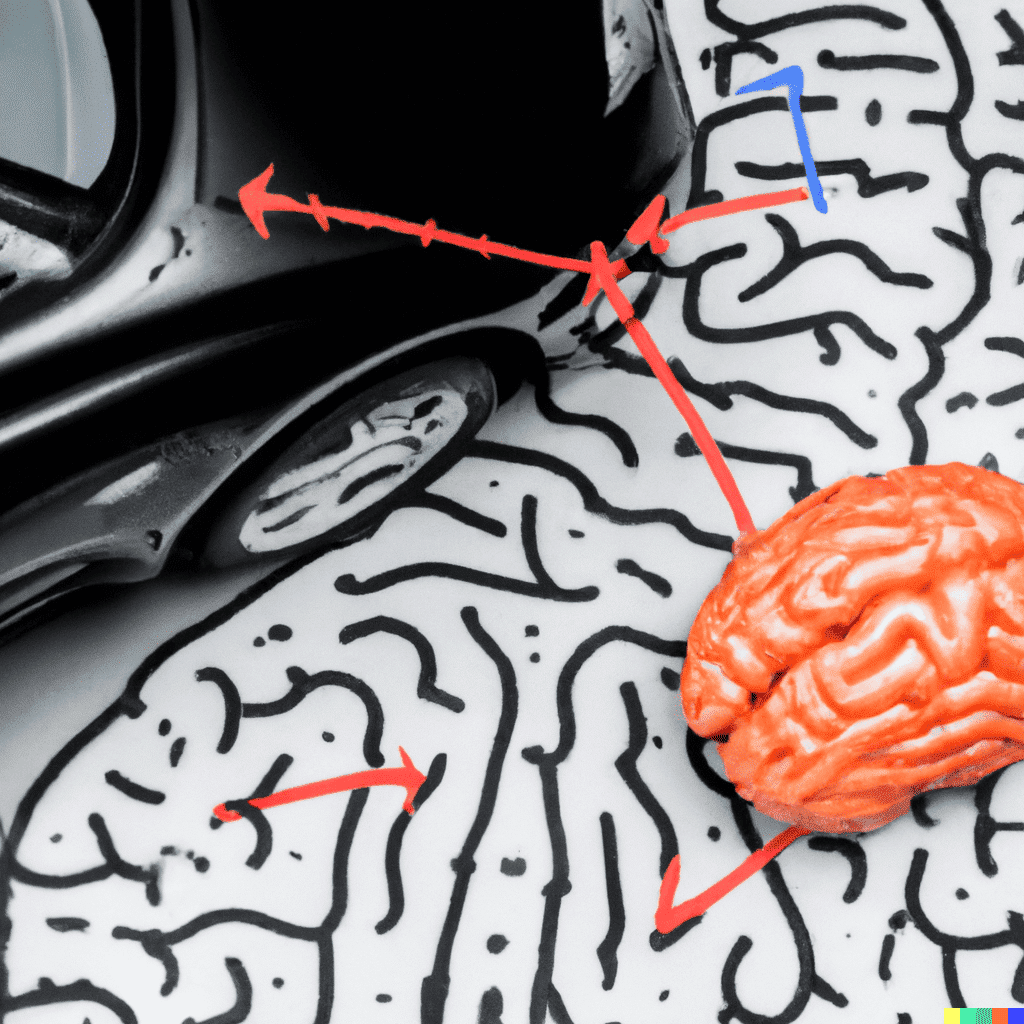Drivers and passengers are at an increased risk of severe car accident injuries. one of the most severe injuries from car accidents is traumatic brain injury, which occurs a violent blow to the head inflicts damage to the brain tissue.
Brain injuries often leave victims with permanent physical and cognitive problems or lead to death.
The part of the brain injured in an auto accident greatly influences the severity, nature, and length of any symptoms the person may experience. Of all car accident brain injuries, damage to the brain stem can have some of the most severe outcomes.
In this article, we will talk about the brain stem, how it may suffer an injury in an auto accident, and possible settlement amounts for brain stem injuries from car accidents.
What Is the Brain Stem?
The brain stem is one of the brain’s most essential parts. It is responsible for fundamental bodily functions like breathing, controlling blood pressure, and making the heartbeat.
Moreover, the brain stem facilitates the transmission of sensory data between the body and the brain.
The brain stem is located at the base of the skull. Although considerably tiny, it is crucial to maintain its health. There are three main components to the brain stem:
- Midbrain
- Medulla oblongata
- Pons
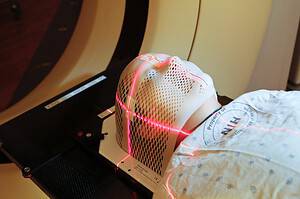
The midbrain supports various functions such as sleep, hearing, motor function, and body temperature.
The medulla oblongata is in charge of regulating human reflexes and involuntary actions such as swallowing and breathing.
Lastly, the pons connects the spinal cord and central nervous system. It makes sense that a severe head injury may affect any of these three areas, which could affect specific essential body components and processes.
How Can the Brain Stem Get Damaged in a Car Accident?
As mentioned earlier, the hits or jolts the body absorbs following a car accident may likely result in a traumatic brain injury.
During a vehicle accident, the brain can twist and come in contact with the inside of the skull. That can lead to complications, including skull fractures, internal bleeding, and even disabilities.
Generally, brain tissue, blood vessels, and nerves may sustain irreversible damage in a vehicle crash. Furthermore, car accidents can lead to severe bleeding, edema, and blood clots, all of which can stress the brain.
Although traumatic brain injuries are a common type of injury, they usually result from high-speed car crashes.
But regardless of the accident type you get into, seek medical attention and legal counsel immediately to prevent additional issues.
Symptoms of a Brain Stem Injury
A traumatic brain injury impairs the ability of the affected brain part to perform its regular functions. TBI symptoms include headache, fatigue, disorientation, blurred vision, loss of consciousness, and sensitivity to sound and light.
Chronic headaches, speech difficulties, seizures, frequent vomiting, numbness, wide pupils, awkwardness, and disorientation are symptoms of more severe brain stem injuries.
The following are some phrases used to characterize brain injuries:
- Lesion: Damage to any brain area that might worsen over time.
- Stroke: A condition in which a section of the brain’s blood flow reduces as a result of clogged or burst blood vessels
- Hypoxia/anoxia: Reduced oxygen supply to the brain
- Hemorrhage: Brain bleeding; a form of stroke resulting from a ruptured blood vessel, trauma, or hypertension
- Concussion: Mild trauma to the brain that results in transient headaches, nausea, disorientation, dizziness, poor coordination, exhaustion, and ringing in the ears.
- Laceration: When something like skull pieces tears or rips brain tissue.
- Herniation: A bulge in the brain
- Diffuse axonal damage: The ripping of long nerve fibers brought on by the brain being violently moved, shifted, or rotated.
- Hematoma/contusion: An injury that results in a bruise or an accumulation of blood that exerts detrimental pressure on the brain.
- Ataxia: Poor coordination and speech that mimics intoxication
- Meningitis: An illness brought on by a virus or bacterium that inflames the meninges and the membranes surrounding the brain and spine.
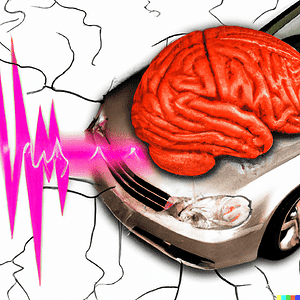
Brain stem damage does not happen in a vacuum. Even so, the exact consequences of brain stem injury depend on the anatomy and function of the brain stem. Examples include:
- Sensory loss/ cranial nerve defect: These are symptoms of brain stem lesions. They may affect your ability to swallow, spit out saliva, chew, taste, hear, speak, balance, heart rate, and use your face and back muscles. They may result in facial numbness or paralysis.
- Mobility issues: A brain stem stroke or related damage can cause hemiparesis or quadriparesis. Another disorder that may affect someone’s coordination and balance is ataxia. Another similar condition is spastic hypertonia, marked by muscular spasms that worsen with movement.
- Tremors: Uncontrollable twitching movements of the arms, hands, head, face, eyes, and legs can also affect brain stem injury victims.
- Heart and respiratory issues: Brain stem damage may result in irregular heartbeats, fluctuations in blood pressure, and difficulty breathing.
- Sleep issues: Sleep apnea and chronic fatigue syndrome are linked to brain stem damage.
- Cognitive impairment: Brain stem injuries are serious and life-altering, and they may affect a person’s memory, cognition, spatial abilities, attention, and even temperament.
- Unconsciousness: Because reticular formation is essential for consciousness, brain stem lesions can lead to comas.
What Is a Traumatic Axonal Injury?
A traumatic axonal injury (TAI) results from a jolt in the brain. To understand this, imagine a cookie jar. The jar will remain intact if you shake it, but the cookies may break up.
An axonal injury causes nerve damage as opposed to breaking biscuits. Lesions and cerebral edema are symptoms of TAI.
Can You Recover from a Brain Stem Injury?
A brain stem injury is an emergency case. Most patients undergo immediate surgery to control the bleeding. Others do better when the procedure is put off until the opportune time.
Patients are regularly monitored to ensure hematomas, lesions, and contusions do not worsen.
Since brain damage is almost irreversible, the primary objective of therapy is to avoid secondary injuries. Primary injury is the main cause of trauma, such as an auto collision or stroke.
Yet, a domino effect could make an injury worsen over time. Once a patient is brought to the hospital, doctors closely monitor the patient’s edema and oxygen flow for several days or weeks.
Brain stem damage affects the body differently based on the injury’s location. Brain injuries typically result in death or severe disability.
Many people believe brain stem injury is a threat since this part is essential for survival.
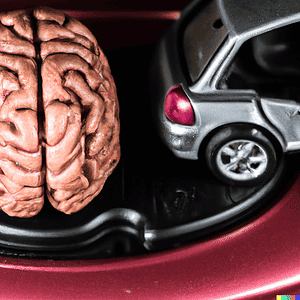
The Glasgow Coma Scale is frequently used to forecast a patient’s recovery following a brain injury.
It gauges the eye-opening, vocal, and motor responses of the patient. There also is a strong relationship between the degree of damage to the brain stem and the duration of the coma.
TBI sufferers occasionally make a full recovery. About 30% of patients with severe TBI and likely with brain stem injury pass away. Around 25% of patients have excellent recoveries, while the rest develop some form of disability.
Scientists are looking into new treatments to help TBI victims have a better prognosis.
The brain is said to be ‘plastic.’ Simply put, the brain can change and restructure itself, often to make up for an injury. Stem cells can also help heal brain damage.
Legal Liability for Brain Stem Injuries from Car Accidents
An essential role of car accident lawyers who represent brain stem injury victims is to investigate the case to determine who was at fault.
The law holds persons, companies, and government agencies liable when their negligence or intentional acts lead to injury-causing or fatal accidents.
Every accident is different, so the parties liable for a victim’s brain stem injuries from car accidents vary from case to case. But usually, the parties you can hold legally liable for a car accident include:
- Vehicles, trucks, or bus drivers whose negligent actions and decisions behind the wheel caused the crash, leaving you with a brain stem injury.
- Employers of drivers who caused an accident while driving a commercial or work vehicle
- Car manufacturers who sell defective cars or car parts, leading to the accident
- Government agencies and contractors if they failed to maintain safe road conditions for public use, leading to the accident.
- Restaurants and bars serve alcohol to minors or visibly intoxicated individuals who then cause a drunk driving accident.
These are some of the many parties, of course.
You can only tell whom to hold legally liable for a car accident once an attorney investigates the facts and circumstances of your case and evaluates them per the laws of the state where the accident happened.
Damages for Brain Stem Injuries from Car Accidents
The at-fault parties may be legally liable to pay damages to victims with brain stem injuries from car accidents. It is difficult for lawyers to know the exact damages a victim can recover in every case.
But generally, car accident victims can seek compensation for:
- Medical costs of brain stem injury treatment, including emergency care, hospitalization, doctor appointments, medication, and long-term care.
- Lost income resulting from the injury keeps victims out of work or limits their capacity to earn in the future.
- Pain and suffering reduced quality of life and loss of enjoyment of life caused by brain stem injury.
- Sometime punitive damages may be awarded. These damages are intended to punish the negligent party and deter the outrageous behavior that led to the crash.
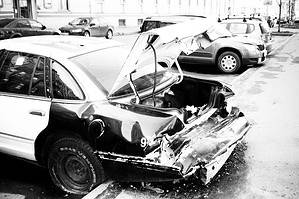
The total amount a victim can get depends on the severity of the injury and their prospects of achieving full recovery.
However, that figure can be different from what a victim can reasonably expect to get from the person legally liable for the accident.
Most of the time, the at-fault party’s liability insurance covers the damages, meaning the policy limitations may act as an arbitrary cap on the amount the victim can receive.
That is why skilled brain injury attorneys put much effort into locating all parties liable to a client with a brain stem injury.
Generally, the more responsible parties, the higher your chances of receiving total compensation for your damages.
Brain Stem Injury Verdicts and Settlements
Many ask how the court handles these cases after suffering a brainstorm injury in a car accident. How much settlement or awards can you get?
Below are some settlements and verdicts that brain injury litigants have previously won. These cases are sampled from law offices from around the nation.
You will realize that these verdicts and settlements are pretty hefty. The amount is fair, considering how severe brain stem injuries are.
But the main factor in these cases is that the defendants had sufficient assets or insurance to cover the damages.
2019, New York: $3,860,000 verdict
A man went to the emergency room after experiencing facial drooping, slurred speech, and general body weakness on the left side.
But by arrival at the ER, he was experiencing dizziness and sinus problems only. The physician diagnosed him with vertigo and sinus infection, but the symptoms persisted over the subsequent week.
He went to family practice, where a specialist ordered him to return for an MRI test the next day. Unfortunately, the man suffered a cerebellar and brain stem stroke that night caused by a vertebral dissection.
Consequently, the man suffered paralysis on his left side, involuntary eye movements, and experienced a burning sensation on his face. He could not go back to work.

He filed a suit against the family practice and hospital for negligently failing to diagnose the imminent vascular dissection.
The hospital, in defense, argued that the man failed to inform them of such symptoms as speech difficulties which could have hinted at the likelihood of a stroke.
The family practice had recorded a dialogue with the plaintiff’s sister advising her to return the man to the ER, so it was not found negligent.
But the court found the hospital and its physician negligent, awarding the man almost $3.9 million in compensation.
2019, Ohio: $1,500,000 settlement
A young lady underwent surgery to correct a Chiari II malformation, which occurs when the cerebellum and brain stem bulge through the skull’s base.
The surgeon did not perform the procedure correctly, resulting in cranial nerve palsies, facial and ocular paralysis, migraines, nausea, weakness, and difficulty swallowing.
The goal of the procedure was to “decompress” the region. The surgery should have eased tension in the brain tissue by cutting a part of the skull.
Yet, the surgeon inserted titanium plates to fill the excess space left after removing part of the skull. That was a poor decision, according to an expert’s testimony.
The surgeon also failed to inform the patient’s family appropriately that the procedure was unsuccessful. She and her parents received $1.5 million.
The parents were part of the settlement because they claimed a “loss of consortium.”
2019, New Jersey: $5,100,000 settlement
A 53-year-old plaintiff went to the emergency room, manifesting symptoms of brain bleeding, including headache, sluggishness, confusion, and a deteriorating Glassgow scale score.
But the doctors never ordered a CT scan to check for bleeding but instead placed her under psychiatric care because she had a history of bipolar disorder.
The physicians should have relied on her symptoms, such as altered mental status and slurred speech, to rule out brain problems. Moreover, the family insisted she was experiencing a stroke, not a maniac episode.

Failure to order a CT scan on time delayed the severe stroke diagnosis she was having. Delayed diagnosis can lead to hemorrhage and likely brain stem herniation.
The plaintiff suffered brain damage, forcing her to live in a nursing home due to cognitive impairments. The lawsuit involved hospital residents, nurses, and the emergency room team as defendants settled pre-trial at $5.1 million.
2018, Washington: $1,000,000 settlement
A man and woman were riding a motorcycle in Washington state when oil containers in a truck in front of them fell.
They hit the oil spill, causing the man to lose control of the motorcycle. The man was trapped under the motorcycle while the woman was thrown into the road.
The woman did not survive. The man suffered a traumatic brain injury, including bleeding on the midbrain part of the brain stem, a facial structure, and a punctured lung. He would need life-long care.
The two (with the woman under posthumous representation) sued the trucking agency for failing to secure the containers properly. They collectively received $1 million in awards, the Progressive insurance policy limit.
Work With a Reputable Car Accident Lawyer
You could file a personal injury claim if you or a loved one sustained a brain injury in a car accident caused by a negligent party. However, it is advisable to pursue this case with the help of a lawyer.
Brain stem injuries from car accidents attract significant settlement amounts. However, insurance companies may take advantage of you if you don’t work with a lawyer.
Legal Giant partners with experienced car accident lawyers who can help you win a substantial settlement for your present and future damages.
Contact us at (855) 740-5024 for a free case evaluation.
